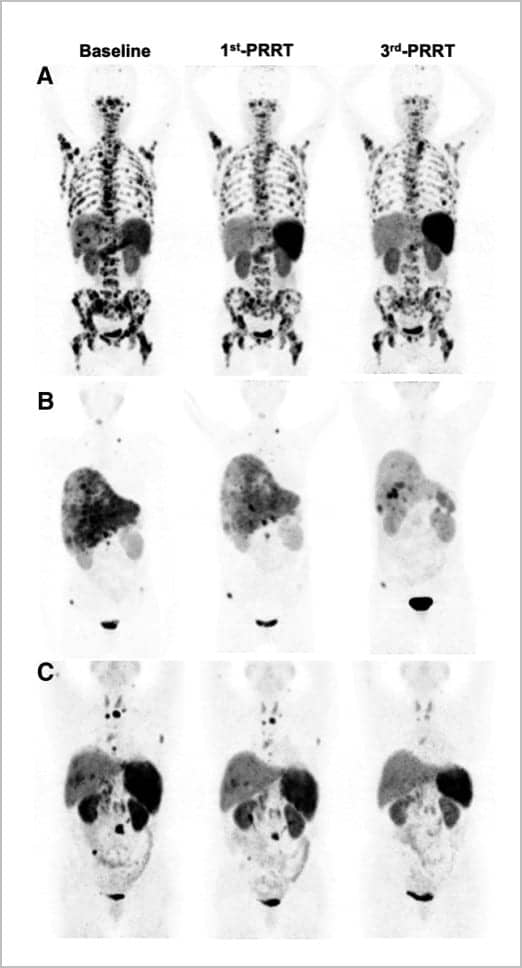A new treatment for late-stage neuroendocrine tumors (NETs) has been found to be more effective and have fewer side effects than the current standard of care, according to research published in the March issue of The Journal of Nuclear Medicine. The novel peptide receptor radionuclide therapy holds promise to reduce mortality among NET patients and decrease the financial burden of their continual treatment.
NETs are a diverse group of tumors that originate from the neuroendocrine system, which is responsible for regulating hormones throughout the body. The number of people who are diagnosed with NETs is growing; the incidence of NETs increased 6.4-fold from 1973 to 2012. However, because they are rare, varied, and slow growing, the diagnosis of a NET can be delayed up to seven years. As a result, more than 50% of NET cases are at an advanced stage at the time of diagnosis.
The current standard of care for late-stage NET patients is peptide receptor radionuclide therapy with 177Lu-DOTATATE, which is flushed from a patient’s system rapidly after administration. Preclinical studies found that if a special dye (Evans blue) is added to the 177Lu-DOTATATE, the treatment can last longer in the body and be more effective. In this study, researchers sought to determine what dose of the modified therapy, known as 177Lu-DOTA-EB-TATE, is safest and produces the best tumor response.
Study participants were divided into three groups, and each group was given a different dose of 177Lu-DOTA-EB-TATE. All the groups tolerated the therapy well, with almost no side effects regardless of the dose. Ultimately, researchers found that a 177Lu-DOTA-EB-TATE dose of 1.89 GBq/cycle was the most effective for tumor control in the NET patients. They also noted that with careful patient selection and monitoring, a 3.97 GBq/cycle dose could achieve an even better response.
“In terms of NETs, the more effectively we can use 177Lu for treatment, the more we will be able to reduce the financial strain on patients,” says Xiaoyuan (Shawn) Chen, PhD, Nazarat Muzayyin Chair professor at the National University of Singapore. “Overall, this new treatment has the potential to significantly impact mortality and morbidity for neuroendocrine tumor patients.”
He continues, “Now that we understand the efficacy of Evans blue dye in NET treatment, we hope that it can be utilized in the future to create various novel therapeutic radiopharmaceuticals not just for NET patients, but for other types of cancer patients as well.”






